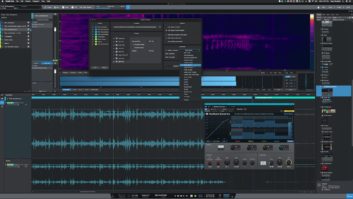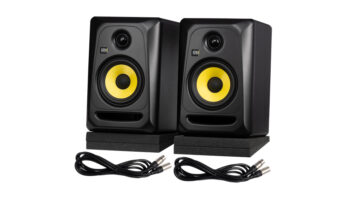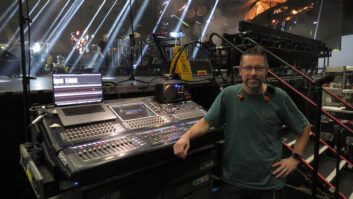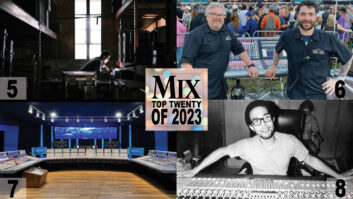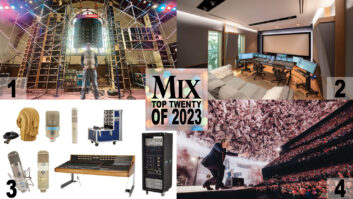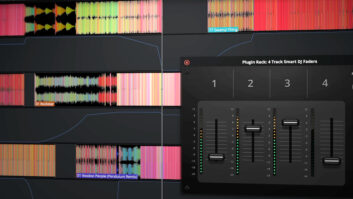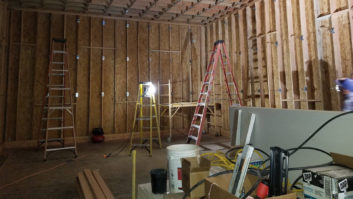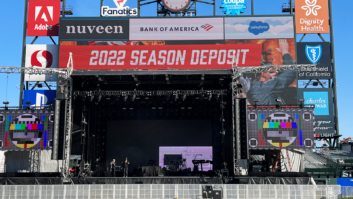Even when I was several weeks into a sonically finished space, there were still additional items that had to be put in place to call the room finished. I’ve finally worked my way through the list and am on the other side.
Building Dangerland, Part 3: Digging In—Floating My Control Room
Building Dangerland, Part 4: Studio Construction—Almost There
Here’s what I had to do to get there:
• Furniture is a necessity and I decided to go with custom-built furniture rather than go with one of the readily available pre-fab options. I fell in love with the studio furniture at Shane Wilson’s St. Izzy’s Of The East studio the first time I saw it, so I decided to go the same route and have Nate Clark of Clark Custom Furniture Design build mine.
Nate is a master craftsman who takes pride in his immaculate work and does an exceptional job of building furniture that is both highly functional and made to last a lifetime. The only downside is he is in extremely high demand, so it took a couple of months to get to the front of the line after being placed on the waiting list. No doubt though, it was well worth the wait.
• My previous mix space had a console that facilitated my monitor switching and volume control and cue routing, but since I decided to make Dangerland sans console, getting the right monitor controller was a critical decision. Sadly, there are only a few high-end options and I decided the Grace m905 was the best option for me.
Before making my final decision, I was able to park a review unit at my place for several months (look for the review here in the coming months) and I was blown away by the box’s functionality and build-quality. The m905 includes mastering-quality Digital to Analog Converters along with an audiophile-quality headphone amp. It’s a pretty amazing box that incorporates a lot of configuration flexibility, allowing users to only buy the features that they need (analog-only input, phono preamp, infrared wireless remote, etc.). The bottom line is it works amazingly well, giving me more accurate monitoring and thus, improving my work speed.
• Engineers often spend thousands and thousands of dollars on speakers without giving a thought to speaker stands. My experience is that in many situations, speaker stands are nearly as critical as the speakers they are supporting. I always used Sound Anchor speaker stands in my previous studio ventures and after researching the subject, they still seem to be the best option. So I’ve implemented a pair of Sound Anchor ADJ1 stands along with a pair of Auralex ProPAD-XL speaker isolators, and my Focal SM9 monitors have never sounded better.
With such an awesome space right in my house, my only problem is remembering that I need to take breaks to eat and sleep. I’d go into more detail, but I’ve got to get back to work – happy mixing!
